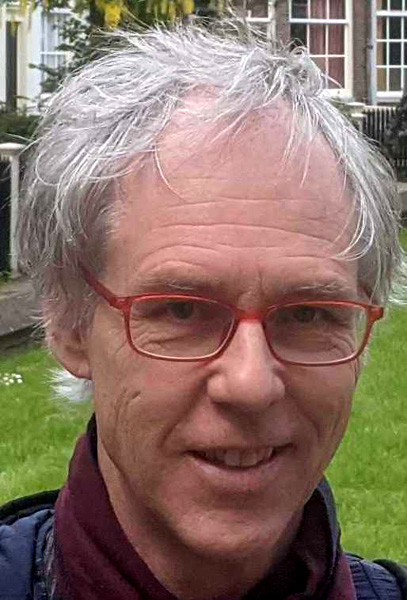Program
Proceedings: LNCS 14628 Petri nets 2024
Invited Talks
Jose-Manuel Colom

Harnessing Structure Theory of Petri Nets in Discrete Event System Simulation
Nowadays Discrete Event Systems (DESs) require complex and large models, for which distributed simulation engines become, in practice, the tools used to understand and analyze their behavior. The feasibility and eficiency of a distributed simulation of these large-scale models is strongly dependent of the information that can be obtained from the models, previously to the simulation process itself. This information can give assistance to the generation of an initial partition of the model, allowing a well balanced workload among the individual simulation engines deployed, or in the generation of the predicates to be evaluated in order to determine the enabling of transitions; or the computation of look-ahead information in conservative strategies of distributed simulation. Petri nets allow to obtain information from the structure that can be used to advance conclusions or properties about the course of a simulation. This information can be usefull either independently of the considered initial marking, or parameterised by its initial choice. This structural information can be obtained in modelling phase, completed in simulation time and re-elaborated from the simulation results, and therefore associated to the model or modules of the model in such a way that can be harnessed in further simulations where these nets will be used. Last but no least, the maintenance of the structure of the Petri net during the simulation (in an interpreted simulation instead of a compiled one) allows to make load balancing during the simulation or to federate with legacy simulators, in an easier way than using other kind of specification models or simulation schemes.
Gabriele Taentzer

On the Application of Model-Driven Optimization to Business Processes
The optimization of business processes is an important task to increase the efficiency of the described workflows. Metaheuristic optimization, such as evolutionary search, has been used to optimize business process models, but it requires a high level of expertise that not all process designers have. Model-driven optimization (MDO) promises to make the use of metaheuristic optimization accessible to domain experts without in-depth technical expertise by allowing them to specify the optimization algorithm directly at the model level. Because this approach is less technical, the process designers can focus on the business process models and their properties. Using concrete business process optimization problems as a starting point, we discuss how MDO can be applied to these problems, what MDO would offer for business process optimization, and how the application to business processes could stimulate research on MDO.
Rob van Glabbeck

Just Distributability
In this talk I investigate which systems can be implemented in a distributed fashion, by sequential components that interact solely through asynchronous communication. Naturally, such an implementation should satisfy the same safety and liveness properties as the original system. Here I use Petri nets to model the systems under investigation, and find a way to implement any net in a distributed fashion, provided we allow read or listen arcs in our implementations.
Accepted papers
|
Alex Chan, Adrian Wheeldon, Rishad Shafik and Alex Yakovlev |
Design of Event-driven Tsetlin Machines using safe Petri nets |
|
Eike Best and Raymond Devillers |
Petri Net Synthesis from a Reachability Set |
|
Pierre Bouvier and Hubert Garavel |
Identifying Duplicates in Large Collections of Petri Nets and Nested-Unit Petri Nets |
|
Stefan Haar and Serge Haddad |
On the Expressive Power of Transfinite Sequences for Continuous Petri Nets |
|
Akio Watanabe, Ayumi Araragi, Hiroki Ikeuchi and Yousuke Takahashi |
Concurrent Context-Free Grammar for Parsing Business Processes with Iterated Shuffles |
|
Damien Morard, Lucas Donati and Didier Buchs |
Symbolic Model Checking using Intervals of Vectors |
|
Elvio Gilberto Amparore, Susanna Donatelli and Lea Terracini |
Hilbert composition of multilabelled events |
|
Ryszard Janicki, Jetty Kleijn, Maciej Koutny and Lukasz Mikulski |
Relational Structures for Interval Order Semantics of Concurrent Systems |
|
Loic Helouet and Prerak Contractor |
Symbolic domains and reachability for nets with trajectories. |
|
Fernando Pereira, João-Paulo Barros, Filipe Moutinho, Anikó Costa, Rogério Campos-Rebelo and Luis Gomes |
Remote Debugger: A Tool to Remotely Monitor and Operate IOPT-nets Controllers |
|
Jakub Kovář and Robin Bergenthum |
Token Trail Semantics II - Petri Nets and their Net Language |
|
Lukas Zech and Karsten Wolf |
Verifying Temporal Logic Properties in the Modular State Space |
|
Dominique Sommers, Natalia Sidorova and Boudewijn van Dongen |
Conformance Checking with Model Projections - Rethinking Log-Model Alignments for Processes with Interacting Objects |
|
Lucie Guillou, Arnaud Sangnier and Nathalie Sznajder |
Safety Verification of Wait-Only Non-Blocking Broadcast Protocols |
|
Carolina Lagartinho-Oliveira, Filipe Moutinho and Luis Gomes |
Using Petri Nets for Digital Twins Modeling and Deployment: A Power Wheelchair System Case Study |
|
Julian Gaede, Sophie Wallner and Karsten Wolf |
Modular State Space - A New Perspective |
|
Tobias Brockhoff, Moritz Nicolas Gose, Merih Seran Uysal and Wil M.P. van der Aalst |
Process Comparison Using Petri Net Decomposition |
|
Amazigh Amrane, Hugo Bazille, Emily Clement and Uli Fahrenberg |
Languages of Higher-Dimensional Timed Automata |
|
Étienne André, Jaime Arias, Benoit Barbot, Francis Hulin-Hubard, Fabrice Kordon, Van-François Le and Laure Petrucci |
CosyVerif: the Path to Formalisms Cohabitation |
